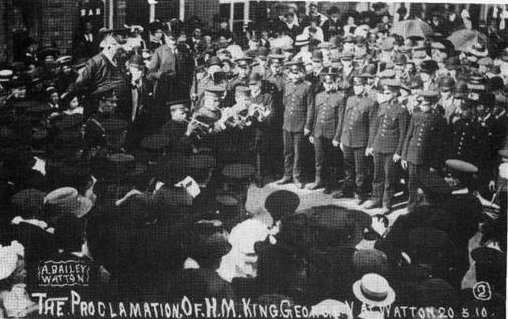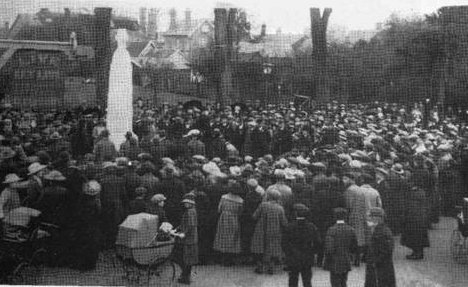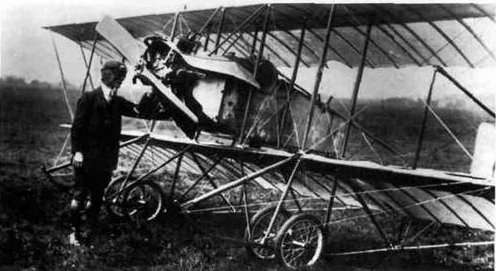
The War Memorial
One of the pleasantest walks in the town is along the avenue of Lime Trees between the War Memorial and the Church. The trees were planted by the parishioners of Watton in commemoration of the Coronation of Edward VII which took place on August 9th 1902. In the same year a pair of heavy metal gates and railings were erected at each end of Church Walk, as it became known, kindly donated by Lord Walsingham. Originally it was very muddy in the winter, but about fifty-five years ago it was asphalted at the expense of Mrs Davey, who owned a confectioners shop where the bet ting office now is. Watton was cut off from the outside world by 8 feel high snowdrifts on February 25th 1958. Many children attending Swaffham Grammar School and workmen at R.A.F. Station, Marham were unable to get home, some of them for two nights. Blinding snow storms on February 15th 1979 also cut off the town and Mr. Reg Edwards of Sharman Avenue was flown to the West Norwich Hospital by helicopter for an emergency operation to save his sight. From the early 1870's Robert Button and Sons were builders, undertakers, timber merchants, wheelwrights, carpenters, plumbers, glaziers, decorators and bridge builders with premises covering lour acres in Brandon Road. They built some of the bridges still in use in the district to-day. From about 1879 Robert Button and Sons, kept the Jolly Farmers Inn. William Semmence was a wood turner who had a large contract with the dye manufactures in Lancashire for making wooden bowls used in their dye works. His brother Albert was a mineral water manufacturer who moved from the "Jolly Farmers" in 1912 to a site in Cley Lane, next to the Gas Works and later moved to the "Garden House" on Norwich Road where he finished business in the late 1920's. During the turn of the century Fred Garner had his coach works next to the railway line in Norwich Road, Here he turned out many types of horse carriages and he was also the pioneer of the motor car in Watton. His first car was an "Argyll" and it was reputed to be capable of an incredible speed of 10 mph. The lads of the day lost no time in "dubbing" it, "Bonny Mary of Argyll". Little Freddie, as he was affectionately known, was the "king of ice skating" at Loch Neaton, where he cut the most intricate figures and designs.
In May 1980 a number of empty houses on the R.A.F. Station became home for 65 Vietnamese refugees, these so-called "Boat People", who had no home or security and very little privacy for nearly five years, spent many weeks on the open seas in small boats before arriving in Watton. Many people in the town and the adjoining village of Carbrooke had given furniture, clothing and time to help set up the re-habilitation centre and others had volunteered to befriend the families outside the camp by introducing them to life in the local community. An open day was also arranged for June 14th when residents from Watton and the nearby villages were invited to visit the camp and meet the refugees informally. |



